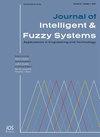基于模型预测控制算法的直流微电网混合储能容量优化分配
IF 1
4区 计算机科学
Q3 COMPUTER SCIENCE, ARTIFICIAL INTELLIGENCE
引用次数: 0
摘要
为有效提高直流微电网的安全、稳定和经济运行能力,提出了一种基于模型预测控制理论的直流微电网混合储能系统(HESS)优化控制策略(简称表2)。根据超级电容器和电池的特性、系统安全要求和各种约束条件,建立了混合储能直流微电网的预测模型。通过定义其优化指标,设计能量优化管理策略,并将其转化为二次规划问题求解,实现了直流微电网的电力合理调度。此外,提出了一种无约束的系统功率控制方法。仿真实验结果表明,在初始采样时间,系统运行正常,MPC算法分配两种储能装置放电,满足净负荷需求,不吸收外网电量。在第30个采样点,净负荷增加,MPC控制器根据已知的前一个采样时间的净负荷预测数据得到控制问题的最优解。它输出下一次每个输出单元的运行参考值。从第100 ~ 199个采样点开始,SOC UC低于安全区间下限,系统进入情形4模式。外部网络输出帮助电池工作。在第131个采样点,净负荷下降,系统进入Situation 3模式,蓄电池独立运行。直到第179点,SOC B也低于其安全区间下限,系统进入情形5模式,完全依靠外部网络供电维持系统功率平衡。从201点开始,净负荷为负,系统按指令向HESS充电,停止向外电网输送能量。结论:验证了所提出的优化管理策略的可行性和有效性。本文章由计算机程序翻译,如有差异,请以英文原文为准。
Optimal allocation of hybrid energy storage capacity of DC microgrid based on model predictive control algorithm
To effectively enhance the safety, stability, and economic operation capability of DC microgrids, an optimized control strategy for DC microgrid hybrid energy storage system (HESS)(The abbreviation table is shown in Table 2) based on model predictive control theory is proposed. Based on the characteristics of supercapacitors and batteries, system safety requirements, and various constraints, a predictive model for a hybrid energy storage DC microgrid is established. By defining its optimization indicators, designing an energy optimization management strategy, and transforming it into a quadratic programming problem for solution, the reasonable scheduling of power in the DC microgrid has been achieved. In addition, a power control method was proposed for the system without constraints. The simulation experiment results show that at the initial sampling time, the system operates normally, and the MPC algorithm allocates two types of energy storage devices to discharge to meet the net load demand, without absorbing electricity from the external network. At the 30th sampling point, the net load increases, and the MPC controller obtains the optimal solution of the control problem based on the known net load prediction data at the previous sampling time. It outputs the operating reference values of each output unit at the next time. Starting from the 100th to 199th sampling points, SOC UC falls below the lower limit of the safety interval, and the system enters situation 4 mode. The external network output assists the battery in working. At the 131st sampling point, the net load decreases, the system enters Situation 3 mode, and the battery operates independently. Until the 179th point, SOC B was also below the lower limit of its safety interval, and the system entered situation 5 mode, completely maintaining system power balance by external network power. Starting from point 201, the net load becomes negative, and the system charges the HESS according to instructions and stops the external power grid energy transmission. Conclusion: The feasibility and effectiveness of the proposed optimization management strategy have been verified.
求助全文
通过发布文献求助,成功后即可免费获取论文全文。
去求助
来源期刊

Journal of Intelligent & Fuzzy Systems
工程技术-计算机:人工智能
CiteScore
3.40
自引率
10.00%
发文量
965
审稿时长
5.1 months
期刊介绍:
The purpose of the Journal of Intelligent & Fuzzy Systems: Applications in Engineering and Technology is to foster advancements of knowledge and help disseminate results concerning recent applications and case studies in the areas of fuzzy logic, intelligent systems, and web-based applications among working professionals and professionals in education and research, covering a broad cross-section of technical disciplines.
 求助内容:
求助内容: 应助结果提醒方式:
应助结果提醒方式:


